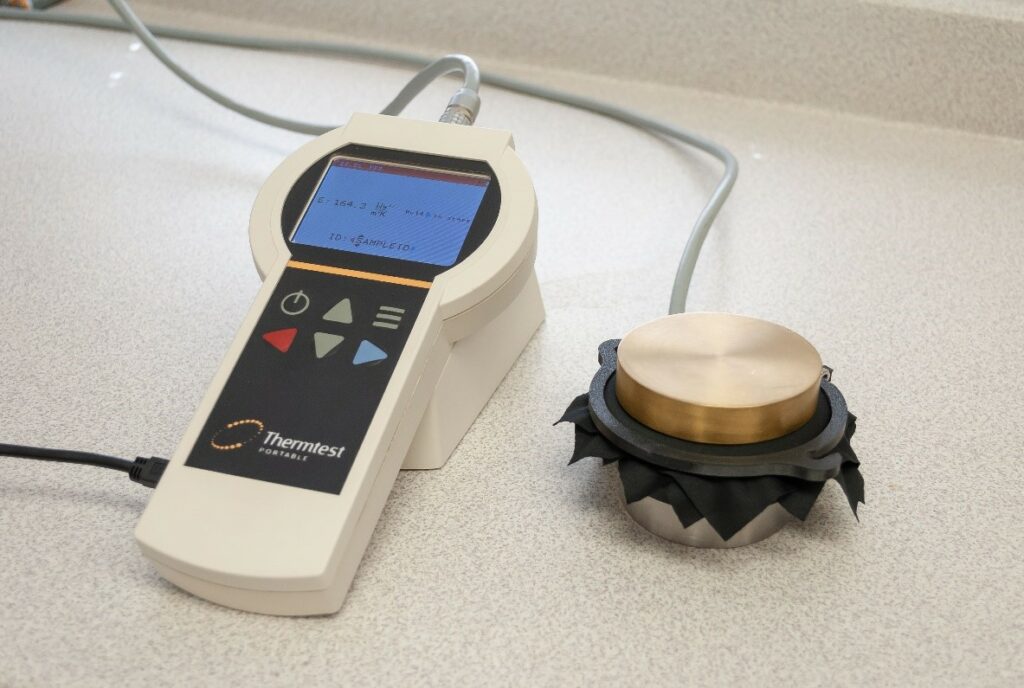The Thermal Effusivity (W√s/m2K) of fabric used as a cooling shirt under bulletproof vests was measured using TPS-EFF (Transient Plane Source-Effusivity) at different moisture levels.
TPS-EFF is a portable thermal effusivity meter for textiles with a thermal effusivity measurement range of 35 to 1700 (W√s/m2K) and a temperature range of -10 ºC to 50 ºC. A single measurement can be set to 2 or 10 seconds in duration. The experiment was conducted in accordance with the ASTM D7984-16 standard of testing method.
Thermal effusivity is most typically measured to predict how ‘cool’ or ‘warm’ a textile feels. It has a square root proportionality to the density, thermal conductivity, and specific heat capacity of the material. Dry fabrics often contain pockets of air between the strands, resulting in thermal effusivity values that are typically low. When dry fabrics are exposed to moisture, the air is replaced by water, which has a much higher thermal effusivity. This will cause the fabric to exhibit a higher thermal effusivity value when wet, making it feel ‘cooler’.
In this experiment, the thermal effusivity of a fabric sample was measured at varying moisture levels using TPS-EFF for a touch time of 2 seconds. Higher levels of moisture will result in higher water saturation in the fabric. Therefore, thermal effusivity measurements at higher levels of moisture should be higher compared to thermal effusivity measurements when the fabric is dry.

As expected, the results indicate that the effusivity of the fabric increases with higher moisture levels, due to air (low thermal effusivity) being replaced by water (high thermal effusivity). There is a sharp decrease of thermal effusivity below 10% water saturation. Since the fabric was measured parallel to the ground with the sensor below it, it appears that gravity has pulled the moisture to the bottom of the fabric as the water evaporated off over time, causing most of the remaining moisture to collect at the surface of contact with the sensor.
Due to the water saturation not being homogenous through the fabric thickness, the small amount of remaining moisture had a disproportionally large influence on the measured values. This interestingly caused a sharper than expected contrast in effusivity values for low levels of water saturation compared to completely dry fabric.

Image 2. TPS-EFF sensor with a fabric sample placed on top. The fabric is clamped in a ring to render the layers of fabric uniform. A 600 g brass weight ensures adequate contact between the sample and sensor.
TPS-EFF has an accuracy over 5% discrepancy and reproducibility over 2% discrepancy, making it a highly accurate and precise instrument for measuring thermal effusivity of textiles and other materials.